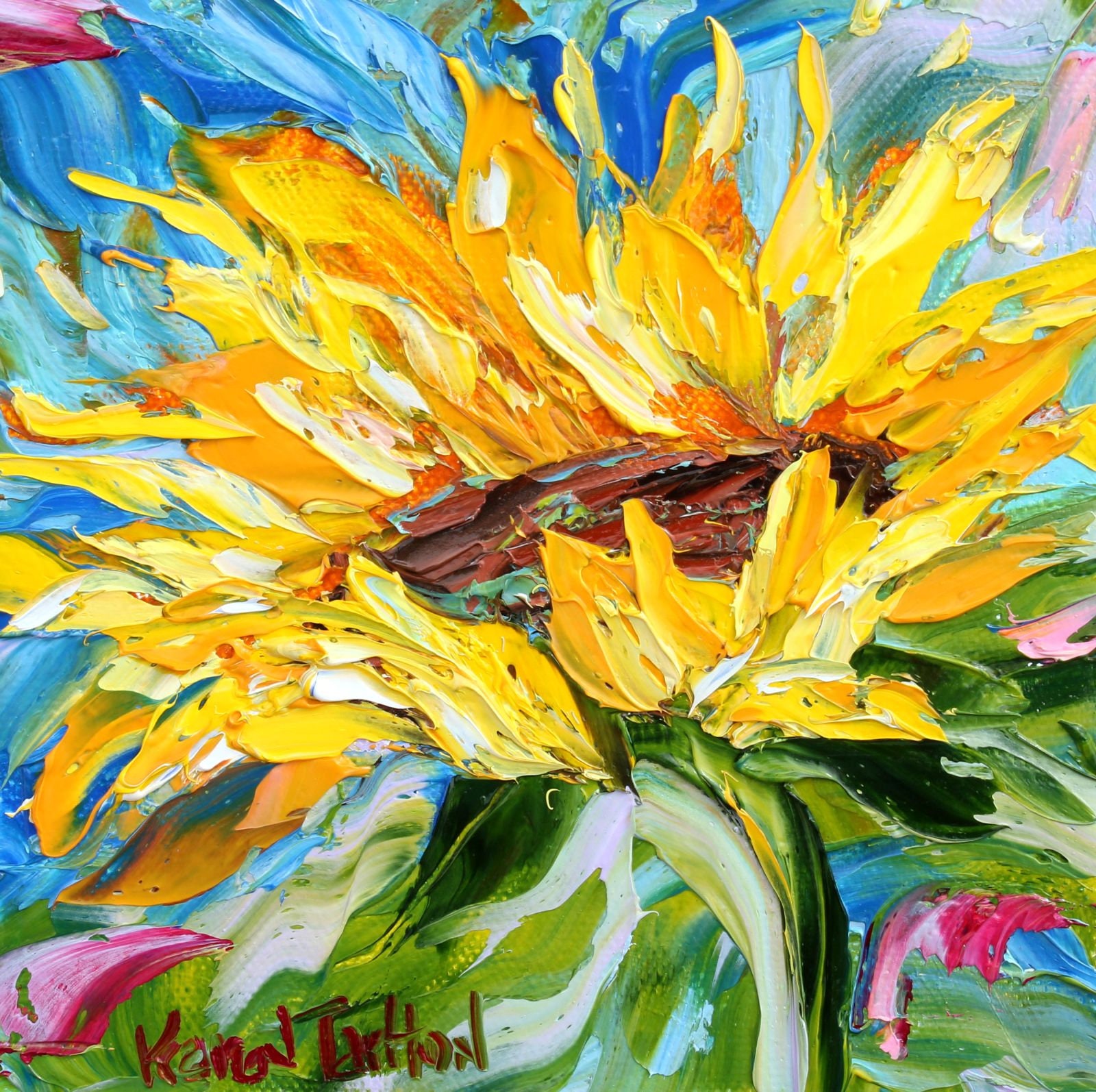

Working on paper also allows you to write notes on the front or the back, like the palette that you used or some information for a future larger painting. It is a great surface on which to experiment with techniques, make colour charts, and produce quick sketches. Because it is less expensive you may feel less precious about wasting a surface and therefore perform more learning exercises. Oil painting paper takes up less room and is lighter in weight than stretched canvas or even canvas panels, which makes it easier to store, carry and post. Why Would You Paint on Paper Instead of Canvas? Additionally, when using un-sealed paper, unsightly oil rings may appear around the paint if there are areas of the paper left unpainted. Using properly sealed (sized) paper for oil painting means that your colours remain brighter and more glossy. It’s important that paper for oil painting is sealed to prevent the paint from being absorbed by the paper, which would eventually embrittle the natural fibres of the paper and if enough oil is absorbed from the paint, the pigment can become under-bound, making it look matt and crumbly, and can in some cases cause the pigment to come away from the surface. They usually have an embossed linen texture on their surface, although Arches Huile, which is a specially treated watercolour paper, has a cold-pressed surface.

Acrylic gesso does not require a size.Oil painting papers have a special coating that prevents the paper from absorbing the oil content of the paint. Linen and cotton will prematurely rot without a size layer. A size seals the porous fabric and isolates it from the ground and/or oil paints. * Size, when used in this context, refers not to physical dimensions but to a medium added to the canvas or linen. Modern Oil Ground: PVA size + oil painting primer Traditional Oil Ground: RSG + priming white Basically, companies are trying to reinvent old master techniques using modern science, taking out the bad parts (yellowing, cracking, toxicity) and replacing them with safer (for you and your paint) alternatives. If the painting cannot begin within three weeks, the canvas should cure for six additional months to ensure a stable paint film.įor a more modern oil primer, try Winsor & Newton’s Oil Painting Primer or Gamblin’s Oil Painting Ground, both of which are non-yellowing, made with an oil-modified alkyd resin, and lead replacement so they aren’t toxic. The canvas is ready to accept paint in 10-14 days. The surface should be completely covered with primer, but not so thickly as to obscure the texture of the canvas. When the first coat is dry to the touch, a second coat may be applied. Priming white (a simple mixture of chalk or gypsum, lead white, and linseed oil) can be thinned to a thick cream consistency with pure gum spirits of turpentine, taking care not to over-thin, and applied with a brush or knife following the long dimension of the canvas.

Check with your local art store and be sure to follow the instructions on the packaging before use. Modern, synthetic alternatives to RSG are available in the form of PVA Size. The canvas should be allowed to dry completely before applying a priming layer. If these are detected, a second coat is necessary.
#OIL PAINT CANVAS FREE#
The surface should be free of pinholes (the result of air bubbles).

#OIL PAINT CANVAS SKIN#
RSG (Rabbit Skin Glue) should be applied as a liquid, warm or hot. The result should be a glue layer that is uniform and covers all fibers, but without thick lumps that obscure the texture of the cloth. Brush glue on, making sure to drive it into the weave of the cloth, and cover the sides as well to avoid damage from oil. Hide glue must be prepared according to package directions. The most traditional size is Rabbit Skin Glue. Oil on oil provides better adhesion than oil on acrylic.įirst, a size* must be applied to the stretched canvas to protect the fabric from the paint (linoleic acid, the component of linseed oil which causes drying, will burn cotton or linen fibers). One of the reasons to prime your canvas with an oil-based primer is that oil paints stick to it better. You can see this in very old paintings when you go to the museum. Although it provides a nice, slick surface, traditional Rabbit Skin Glue (RSG) will cause paint to yellow over time and because it is hygroscopic (it continually absorbs moisture from the atmosphere), it cause the painting to swell and shrink which in turns causes cracking. Some people swear by oil priming-others say they don’t notice much of a difference. Oil priming is a much more traditional way of prepping your surface for oil painting.


 0 kommentar(er)
0 kommentar(er)
